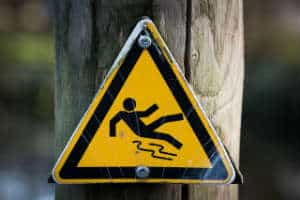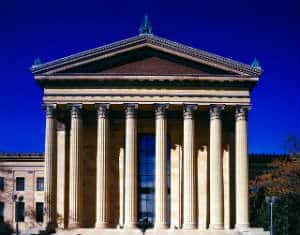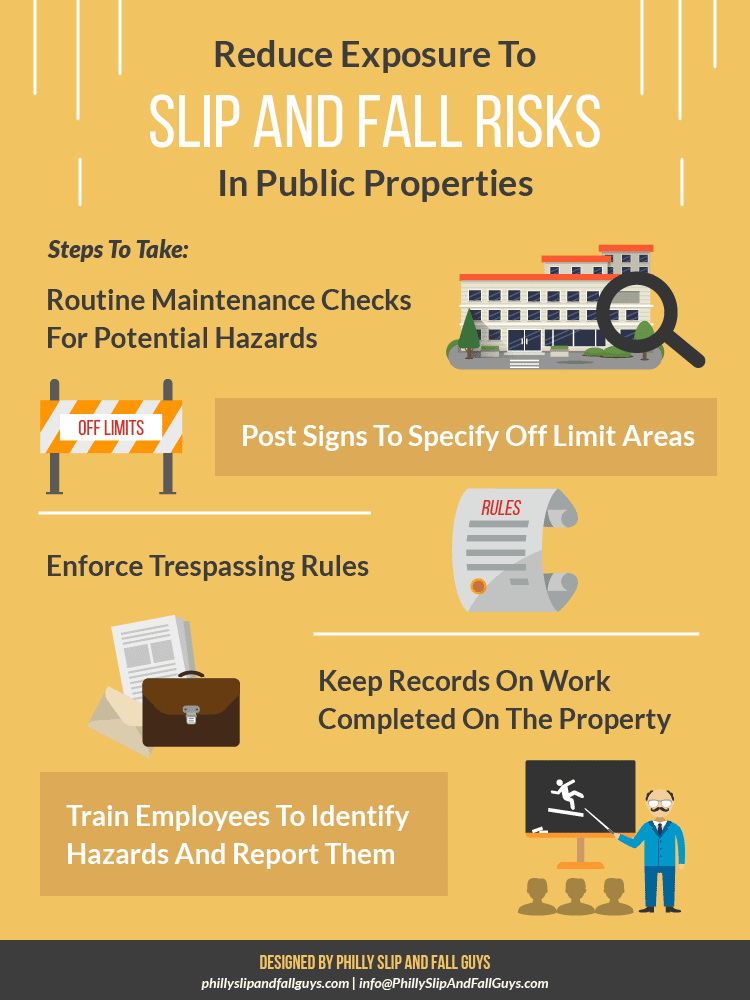What happens when you fall in a public place? There are several levels of responsibility that go along with using public places, and both you and the property owner share in those responsibilities. Before we can judge who is responsible in a slip and fall accident on public property, we have to understand all of the conditions surrounding a personal injury and how civil courts determine negligence.
Your Status On A Public Property
When it comes to your legal right to be on a public property, it revolves around your visitor status. There are three visitor status categories, and they are:
- Guest – A guest is someone who is considered welcome on a property. In the case of a public property, anyone who visits a public property and follows any posted instructions is considered a guest.
- Invitee – An invitee is someone who is welcomed on a property based on their implicit purpose for being there. For example, a lawyer is considered the invitee of a courthouse because of the business the lawyer conducts. It is expected that the property owner will take all necessary steps to make an invitee’s visit as safe as possible.
- Trespasser – A trespasser is either someone who is not authorized to be on a piece of public property or someone who violates posted orders to stay out of a certain area. However, the property owner could still be liable if they know they have trespassers and do nothing to discourage it.
The owner of a public property must make the property safe for an invitee or guest but there is no obligation to make the property safe for a trespasser.
Sledding At The Philadelphia Museum Of Art
A good way to envision how all of this works is to consider the steps of the Philadelphia Museum Of Art during the winter. The steps of the museum are a popular place for people in the city to sled, but it is also something the museum does not approve of. The Philadelphia police routinely remove sledders from the steps, but that only puts a small dent in the number of people who use those steps to sled.
Since those steps are private property and the police routinely warn people to stay off of them, you would think that the museum would not be held negligent if someone was hurt. After all, the people sledding on the steps are considered trespassers. But, as was pointed out in the trespasser definition, the property owner is potentially negligent if they know there are trespassers and do nothing about it. The museum’s ownership has a very relaxed attitude towards the sledders and posts no signs or takes no aggressive action to prevent the sledding. In the end, this could wind up costing the museum in the form of a costly personal injury lawsuit.
What Can Public Places Do To Reduce Exposure To Risk?
Public or private property owners who want to avoid legal problems need to take an approach that is opposite to the one adopted by the Philadelphia Museum of Art. Some good tips for public places to follow to avoid negligence in slip and fall accidents include:
- Do routine maintenance checks of the area and have any potential trip, slip, and fall hazards taken care of immediately.
- Post signs that clearly designate public areas and areas off-limits to the public.
- Enforce any trespassing rules for the property vigorously.
- Keep comprehensive records on maintenance work, repair work, and any efforts to make the property safe.
- Make sure all employees are trained on how to identify hazards and report them to the proper people within the organization.
Organizations that own and operate public property, and private property owners that run public organizations, need to be aware of their responsibilities for safe premises. It is important to let the public know where they can and cannot go, and keep detailed records on all of the efforts made to keep a property safe.

